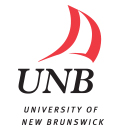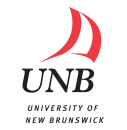Physics
NOTE: See the beginning of Section F for abbreviations, course numbers and coding.
| PHYS1011 | Introductory Physics I | 3 ch (3C 1T) |
|---|---|---|
This course is an introduction to the branch of physics called mechanics. Mechanics is the study both of how objects move and why they move the way they do. Describing the motion of objects requires understanding the basic kinematics quantities position, displacement, velocity, and acceleration, as well as the connection between them. Understanding the causes of motion can be achieved by considering the forces acting on the object and/or by focusing on the conserved properties of the system (momentum, energy, angular momentum). Mechanics applies to a wide range of phenomena, essentially to anything that moves, but this course will highlight ties to and applications in the physical sciences. Co-requisite: Either MATH 1001 or MATH 1003. Students intending to take Physics courses beyond Introductory Physics or continue in the Physical Sciences stream should take MATH 1003 and PHYS 1021 as co-requisites to this course. | ||
| PHYS1012 | Introductory Physics II | 3 ch (3C 1T) |
|---|---|---|
This course introduces the students to wave phenomena and to electricity and magnetism. Throughout, the concepts related to motion learned in the previous course are used to describe and explain new phenomena. The study of waves introduces the students to propagating, periodic disturbances. In addition to their importance in mechanical phenomena (e.g seismic waves), waves form the basis of both optics and acoustics. The study of electricity and magnetism introduces the student to the concept of charge and to the effects of their surroundings (fields and forces). This course will highlight ties to and applications in the physical sciences. Prerequisites: PHYS 1011; MATH 1001 or MATH 1003. Students intending to take Physics courses beyond Introductory Physics or continue in the Physical Sciences stream should take MATH 1013 and PHYS 1022 as co-requisites to this course. | ||
| PHYS1021 | Experiments in Introductory Physics I | 2 ch (3L) |
|---|---|---|
This course provides the student hands-on experience with concepts covered in PHYS 1011. Co-requisite: PHYS 1011. | ||
| PHYS1022 | Experiments in Introductory Physics II | 2 ch (3L) |
|---|---|---|
This course provides the student hands-on experience with concepts covered in PHYS 1012. Co-requisite: PHYS 1012. | ||
| PHYS1801 | Introductory Physics for Biological Sciences | 5 ch (3C 1T 3L E) |
|---|---|---|
A general introduction to Physics, with applications to biological systems. Topics include mechanics, fluid mechanics, electromagnetism, optics, acoustics, and radiation phenomena. This course is intended primarily for students in Biological Sciences. NOTE: Credit will not be given for both PHYS 1801; and PHYS 1011 / PHYS1021. | ||
| PHYS1917 | Physics for Engineering | 5 ch 94C 2T/3L) |
|---|---|---|
Vectors, kinematics, momentum, force, potential and kinetic energy. Kinetic theory of gases, circular motion, charge, field and potential, gravitation, electrostatics, optics, sound. Prerequisite: Grade 12 Physics or equivalent. | ||
| PHYS2011 | Mechanics | 5 ch (3C 3L) |
|---|---|---|
Scalar and vector quantities, statics, kinematics, dynamics, work, energy, power, rotational motion, impulse and momentum, vibratory motion. Prerequisites: MATH 1013, PHYS 1011/PHYS 1012 and PHYS 1021/PHYS 1022. | ||
| PHYS2016 | The Physics of Spaceflight | 3 ch (3C) |
|---|---|---|
Have you ever wondered how to get to Mars? If so, this course is for you. The course will begin with the famous problem of proving Kepler's three laws of planetary motion from Newton's 2nd law of motion and his Universal Law of Gravitation. From this launching point definitions will be developed for the significant geometrical and physical characteristics of elliptical, parabolic and hyperbolic orbits. Next, and what will form the bulk of the course, the motion of spacecraft, and how they can move from one orbit to another, will be studied. The basic form of orbital transfer, called the Hohmann transfer, will be applied first to spacecraft moving from orbit to orbit around the earth and, later, to flights to the Moon, Mars and beyond. | ||


